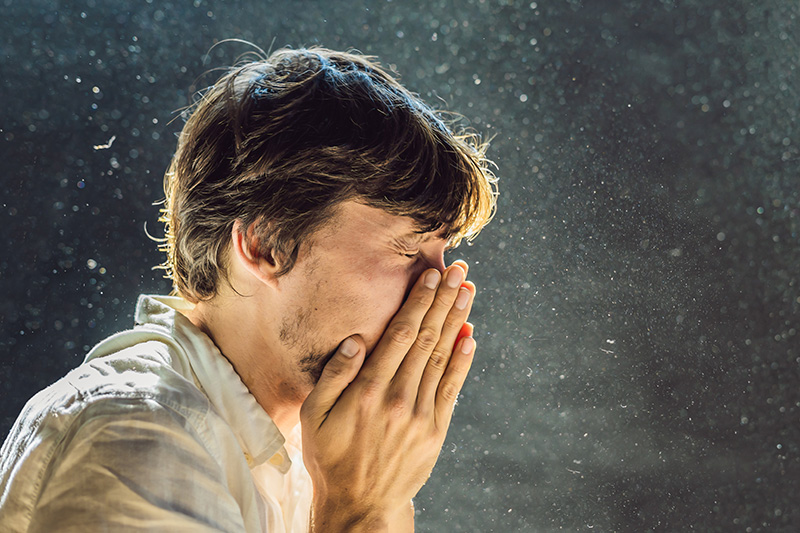The Main Causes of Indoor Air Pollution
April 6th, 2022 by cverdone

Air quality is something you should think about even when you’re in your own comfy home. Indoor pollution, no matter the source, can affect your health and even your HVAC system. The EPA has listed some common causes of indoor air pollution. We go over this list below.
Too Much Moisture
You might not think that excess moisture could affect indoor air quality. But, a home with high humidity levels creates the best environment for mold, mildew, and dust mites. These are all things that can lead to indoor air pollution and can affect certain health issues. These health issues could include:
- Airborne illnesses
- Issues with allergies
- Respiratory ailments
Too much moisture can also make your HVAC system work harder to find the proper balance with the air in your home. If you have issues with moisture in your home, fix this by:
- Considering portable or whole-house dehumidifiers
- Sealing up gaps around windows and doors that could be a source for hot, humid air
- Having your plumbing checked to look for leaks
Volatile Organic Compounds (VOCs)
Aerosol sprays, paint, disinfectants, and pesticides are common VOCs. These could all affect your indoor air quality. VOCs are gasses released from liquids or solids. These gasses are a form of pollution that could affect you and anyone else in your home. VOCs can also lead to:
- Eye and nose irritation
- Nausea and headaches
- Kidney and liver damage
Reduce exposure to VOCs by opening windows when you paint or use toxic sprays when you can. This ensures proper ventilation and circulation. Try to avoid the use of anything that could emit hazardous gasses or fumes.
Carbon Monoxide and Radon
Carbon monoxide and radon are dangerous, odorless gasses. They can affect your health and indoor air quality. CO comes from the combustion of fuels. Some household sources of this gas include:
- Clothes dryers and water heaters
- Furnaces and boilers
- Gas ovens and stoves
- Motor vehicles – especially if you have an attached garage
Radon is a natural gas that could make it into your home from soil or building materials. This type of gas is more likely to get into your home at the lowest point, which is usually a basement. Reduce the risk of CO and radon by using detectors in your home. Newer models provide alerts when levels are too high.
Other Sources of Indoor Pollution
Be on the lookout for other sources of pollution. Any type of pollution could affect your home’s indoor air quality. This is a list that could include:
- Cigarette smoke
- Cooking odors
- Pollutants from outside your home that get inside
- Allergens that get in through windows and doors
Proper ventilation limits issues with any of these indoor air pollution sources. This is especially important in your kitchen and other open spaces in your home.
Call Us Today
If you have any issues with your HVAC system or concerns about indoor air quality, we’re here to help. Call Thornton Heating Services to learn more about your options. We can also help your HVAC system to filter out indoor pollutants. Contact an HVAC professional from our team today for prompt, dependable service.

